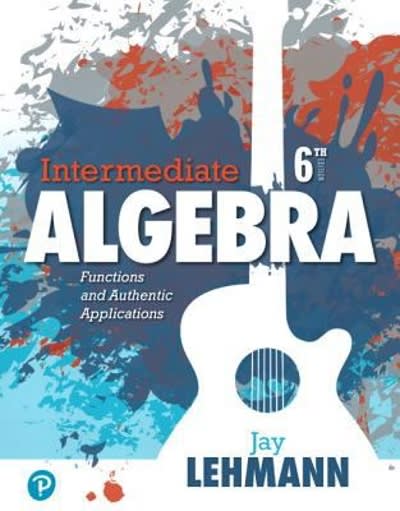Question
EXPERIMENTS1. PAPER AIRPLANESYou are going to carry out an experiment about features of airplane design that lead to better performance. Lacking access to a real
EXPERIMENTS1. PAPER AIRPLANESYou are going to carry out an experiment about features of airplane design that lead to better performance. Lacking access to a real airplane whose design we can modify (and lacking also a test pilot, money for fuel, an airport, and permission from the Federal Aviation Administration), we're going to make do with a paper airplane. We will compare how far a paper airplane flies with and without a paper clip added. You will need to collect data .Supplies Needed: One piece of paper, one paperclip (you can use a pen cap if you don't have one), and one tape measure (you can measure using your feet if you don't have one.)Warning: If you decide to work with another person(s): Because of the pandemic , I do not want you to congregate physically. Therefore, the thrower, measurer, recorder will have to be the same person. RESEARCH QUESTION/HYPOTHESIS1. Do you think the plane will fly further with or without the paper clip? Why?If you decide to work with another person(s): DATA COLLECTION PHASEI.You will be making ONE paper airplane for your experiment.II.Fold your paper into your airplane, following these instructions:https://www.instructables.com/id/Classic-Paper-Airplane-1/III.Follow this experimental protocol 1. Toss a coin to determine if the plane should be in the with- or without-paperclip configuration. (Heads=with paperclip, Tails=without paperclip)
a. You can ask Siri or Google to flip a coin for you!b. When using the paperclip, it should hold together the tail of the airplane.2. The thrower will stand with both sets of toes on a well-defined line. The thrower will throw the plane, taking care to use about the same force and style each time the plane is thrown.3. The measurer will measure the distance (in feet) from the throwing line to the point the plane first touches down. You may round to the nearest half foot in your measurements. 4. The recorder will record the measurement and the airplane configuration on an Excel Spreadsheet. 5. Throw the airplane 20 times, tossing a coin to determine the configuration at the beginning of each trial.6. Submit your Excel spreadsheet of data via the online assignment for this project. Make sure that the title of your file includes your last name.ANALYSISPHASE7. Once you have your raw data, construct a frequency distribution table for all of the 20 distances recorded regardless of whether it had a paperclip or it did not. Create the table using 3-5 classes. (I know we typically want five or more classes but you can create 3 or 4 classes) 8. Calculate the standard deviation from the frequency distribution table. 9. Is this a randomized experiment? If so, why or why not? 10. How can we improve this study if we were to replicate it? Example of table format that you will submit on an excel sheet on :
Trial Paperclip (Yes or No) Distance (in feet)
1
2
3
4
5
6
7
8
9
10
11
12
13
14
15
16
17
18
19
20
Step by Step Solution
There are 3 Steps involved in it
Step: 1

Get Instant Access to Expert-Tailored Solutions
See step-by-step solutions with expert insights and AI powered tools for academic success
Step: 2

Step: 3

Ace Your Homework with AI
Get the answers you need in no time with our AI-driven, step-by-step assistance
Get Started


